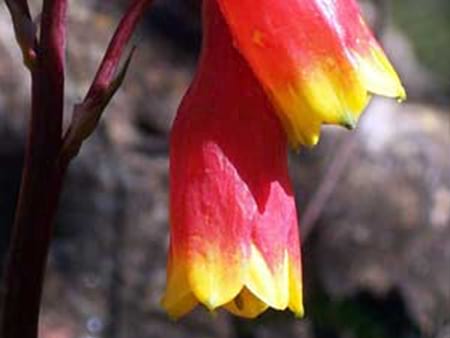Christmas Bells (Blandfordia) have become a favourite addition to many Christmas tables over the festive season in Australia. There are four species within the Blandfordia genus: B. grandiflora, B. noblis, B. cunninghamii and B. punicea, all of which are native to eastern Australia.
Blandfordia were popular among Australian households during the festive season in the 19th Century, and became over-picked in the wild, resulting in some species becoming extinct. Today, Christmas Bells have become a popular commercial crop, and this cultivation is important for ensuring the plants continue to thrive in the wild.
Blandfordia grandiflora produces the larger flowers of the two. Its flowers are usually yellow, and it is not as commonly used as a cut flower as Blandfordia noblis. Although smaller of the two, this flower is usually red with yellow tips.
In the garden, these two Christmas Bells have different requirements. Blandifordia grandiflora prefers a sandy soil with full sunlight and plenty of water and is well suited to rockeries. Blandfodia noblis, on the other hand, will tolerate partial shade as well as full sunlight.
